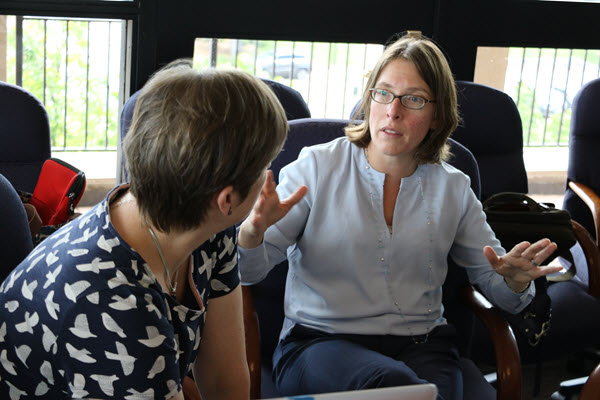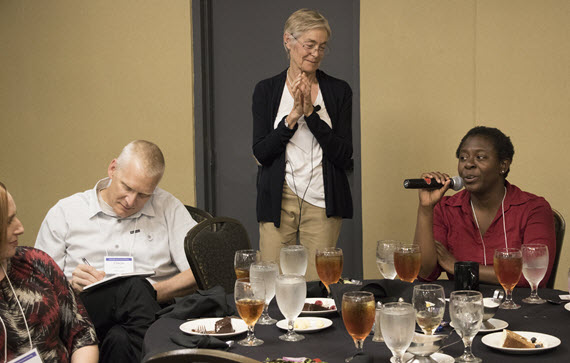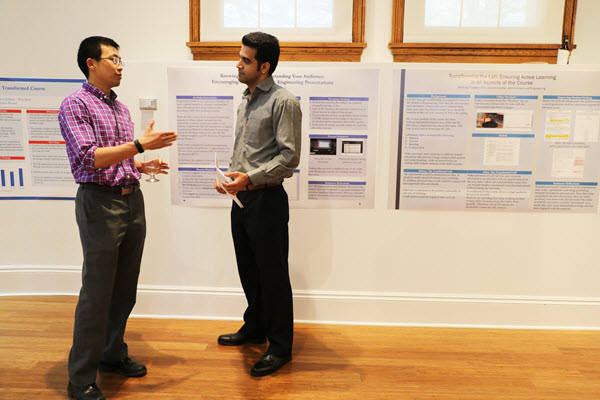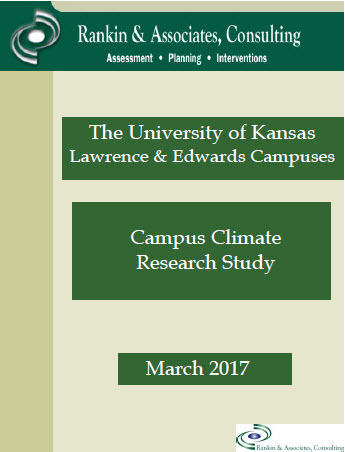By Doug Ward
BOULDER, Colo. – Noah Finkelstein rarely minces words, and the words he offers to public universities carry a lofty challenge.
Society can make no better investment in its future than by promoting higher education, he said. It is perhaps the most fundamental form of infrastructure we have – institutions designed to influence the lives of students and build the core components of society. Pressures on these institutions have pushed them toward priorities that run counter to their founding missions, though, and overlook the very aspect that makes them special: in-person education grounded in a particular region.
Finkelstein is a physics professor at the University of Colorado, Boulder, and co-director of the Center for STEM Learning at CU. He was one of the hosts for the semiannual meeting of the Bay View Alliance steering committee in June in Boulder. KU is among the nine member universities of the Bay View Alliance, which works toward changing university culture in ways that improve teaching and learning. I wrote earlier about Emily Miller of the Association of American Universities and the update she provided about the AAU STEM Initiative. While she focused on the challenges of gaining internal support for changes in teaching culture, Finkelstein spoke more broadly about the way universities have responded to external pressures.

One of the biggest problems, he said, is that universities, responding to concerns from legislators, parents and students, have focused on higher education as a driver of the economy rather than as a means of empowering individuals and investing in the future of democratic society.
“We have those roles inverted,” Finkelstein said. “We’re leading with economic and workforce development. The problem with that as a leading goal is that it does not ensure that benefits flow to individuals or to our society as a whole. It’s possible, but if we start with these other two – if we empower individuals, if we invest in our society writ large – workforce and economic development do come along for the ride in time.”
Universities have taken on the vernacular of business, he said, promoting ill-defined goals of innovation and entrepreneurship, and putting economic drivers ahead of individuals. And like publicly traded businesses, they have pursued a goal of “short-term profit over long-term welfare within our institutions.” That type of thinking must stop, he said.
“We have the privilege of being long term,” Finkelstein said. “We have that opportunity and we must not forgo using that tremendous lever we possess to improve society.”
Short-term thinking has helped drive a wedge between the essential functions of teaching and research at public universities, he said. As states have drastically cut funding to universities, universities have grown increasingly dependent on undergraduate tuition to pay the bills.
“The role of teaching is essential at our institutions,” Finkelstein said, “but it matters to consider the question: to what end? Right now it’s being seen as the main financial driver of our institutions by those who are making decisions. And it’s true that our campuses are driven by undergraduate tuition. But there is – or ought to be – more to it than that. How do we couple that to undergraduate development and learning, or student development and learning, rather than follow the easy, destructive path of hiring adjunct faculty and decouple our core missions of research and teaching?”
He pointed to three ways the BVA could help lead universities toward a better model.
Promote evidence-based teaching. BVA is already engaged in this by creating tools, policies and practices that promote evidence-based teaching. Subgroups of the BVA have been working on models, some financed by grants, to show how teaching specialists can help improve teaching and learning; to create tools for analysis of data about teaching and learning; to use university data to answer questions about teaching and learning; to promote means of assessing teaching that reach beyond student evaluations; and to explore ways to help teaching centers better reach faculty members.
Empower all those engaged in education. Finkelstein said the professional development of chairs was a “key lever” in spreading evidence-based teaching. Another is changing the rewards system so that instructors who use evidence-based teaching stand a fair chance in the promotion and tenure system and in merit raises.
“There seems to be a stronger and stronger discontinuity between what is recognized and rewarded and the core value systems for which our institutions were established,” Finkelstein said. “And that’s something that we can really take on within the BVA.”
The challenge is bigger than that, though, he said. Universities must do a better job of involving everyone in building community.
“This is a way of connecting people, from the parking staff to the faculty to the students to the chancellor to advisors on our campus, that we are engaged in collective vision making. That creates a community. It stitches people together in what have been historically different enterprises. It also allows for essential forms of inclusion and belonging that historically have not been our strength at these kinds of institutions.”
Create vision and identity. Universities create mission statements and value statements that often change when leaders change, and fail to resonate with the individuals on campus, Finkelstein said. Similarly, setting goals like increasing retention and graduation rates is important, but those goals are so general that they don’t provide a means of connecting people or of defining specific roles.
“The students don’t understand what this means,” Finkelstein said. “The faculty don’t understand what this means. Certainly the staff within many of our campus efforts don’t know what this means.”
BVA can be instrumental in sharing and modeling for universities what compelling and comprehensive visions might look like, he said. He also offered his vision for what public universities are and should be.
“We are about knowledge at our institutions,” he said. “We’re about the generation of knowledge and need to be proud of that mantle.”
Not only that, but a college education enculturates students into knowledge systems, he said.
“That’s what education is about,” Finkelstein said. “Not only are we generators of knowledge but we’re generators of those people who are the leaders of these knowledge systems. These things must essentially be coupled, and we are better for having that happen.”
Public universities must also embrace their regional identities, he argued. They must have an international scope grounded in a regional identity.
“We have the particular privilege of being residence-based and committed to human interactions,” Finkelstein said. “We are about people interacting with other people. But we are also still geographically, temporally and spatially located systems. We are essentially regionally based and should recognize that.”
Universities can’t be shy about explaining who they are and where they fit into society.
“We need to put a stake in the ground for what we are as social institutions and enterprises,” Finkelstein said. “Make it very clear and shout this from rooftops.”
Doug Ward is the associate director of the Center for Teaching Excellence and an associate professor of journalism. You can follow him on Twitter @kuediting.













Recent Comments